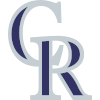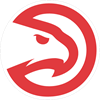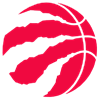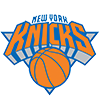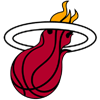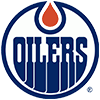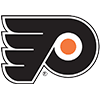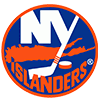This might be a rather unusual look at a fraternity of pitchers I call "the Greybeards." As the 2021 season winds down, there has been considerable conversation, as there always is, looking at who might be worth targeting next spring. And, not too surprisingly, many analysts warn about the dangers of drafting an aging arm. However, in the same chat, they often remark that the older pitcher in question posted some eye-popping numbers this season, making them a valuable part of fantasy rotations.
Wait a minute. We need to beware, but that old guy surprised everyone (or almost everyone) with a better-than-expected performance? Somehow that seems conflicting.
I'll admit, I tend to really focus on the hot young arms coming into their own, often semi-ignoring those aging veterans. There are viable reasons. The most popular veterans got to be that way because they had performed well, often for many years. That usually equates to at least a full price purchase, and sometimes a purchase price at a premium based on heavy name recognition. A declining price tag was almost always a result of declining performance. It seems logical. He was a very good and reliable starting pitcher, but he's getting older, and his skill set must be deserting him. And, then …
Here's the scenario. You have a very competent pitcher, often a No. 1 or "ace" of a staff, who puts up excellent peripherals year after year, before slowing down and having his numbers gradually decline over two or
This might be a rather unusual look at a fraternity of pitchers I call "the Greybeards." As the 2021 season winds down, there has been considerable conversation, as there always is, looking at who might be worth targeting next spring. And, not too surprisingly, many analysts warn about the dangers of drafting an aging arm. However, in the same chat, they often remark that the older pitcher in question posted some eye-popping numbers this season, making them a valuable part of fantasy rotations.
Wait a minute. We need to beware, but that old guy surprised everyone (or almost everyone) with a better-than-expected performance? Somehow that seems conflicting.
I'll admit, I tend to really focus on the hot young arms coming into their own, often semi-ignoring those aging veterans. There are viable reasons. The most popular veterans got to be that way because they had performed well, often for many years. That usually equates to at least a full price purchase, and sometimes a purchase price at a premium based on heavy name recognition. A declining price tag was almost always a result of declining performance. It seems logical. He was a very good and reliable starting pitcher, but he's getting older, and his skill set must be deserting him. And, then …
Here's the scenario. You have a very competent pitcher, often a No. 1 or "ace" of a staff, who puts up excellent peripherals year after year, before slowing down and having his numbers gradually decline over two or three years. By about the third year, fantasy owners stay far away on draft day, and then the pitcher enjoys a virtual rebirth, having his best season in years. Sound familiar? Does Adam Wainwright ring a bell?
Wainwright was a very reliable starter for years. Then, he got hurt in 2015. He came back in 2016, but he wasn't the same guy. Things were even worse in 2017 and 2018. Never a dominating power pitcher, his average fastball velocity dipped below 90 mph, while his ERA hovered around 4.60 to up over 5.00 for one year. At his age of 33 it was easy to say, "He's done." But, in 2019, things looked a little better. Maybe a last hurrah? And in 2020, they were better yet. Short season, small sample? Fast forward to 2021.
In his age 39/40 season, he's 16-7 with a 2.88 ERA, a 1.03 WHIP and 167 strikeouts in 190 innings. I'll wager he is on the roster of a lot of league champions this year.
So, here's the fun part. Below is a seven-man starting rotation (with an alternate in case one of the seven pops up with a long-term preseason injury). I cobbled together a fantasy rotation comprising pitchers who could all be on that "beware" list next spring based on age. They are all age 36 or older with a couple of them pitching beyond the age of 40 in 2022. Let's have a look at our 2022 greybeard staff:
A staff of starting pitchers with age on their side
Justin Verlander (Astros) – Wainwright is certainly not the only pitcher to discover the fountain of youth in recent years. Verlander was actually the first to garner my attention in this arena, He didn't pitch in 2021, recovering from Tommy John surgery, but he gets a spot in our 2022 rotation as the leader of the greybeard pack. In his mid-30s with Detroit he appeared to be slipping a bit. Then, after being dealt to Houston, he remade himself and began pitching better than ever. A "finesse" pitcher? Hmmm, maybe.
Max Scherzer (Dodgers) – You might call him a ringer on this staff since his numbers have never really tailed off, but he is 38 years old. Scherzer has been viewed as an injury risk because of his somewhat violent delivery, but he now has 2,519 innings on his resume, and he just surpassed 3,000 strikeouts. In fact, he is within 10 punch-outs of being the career leader among active pitchers (Verlander). Despite his age and injury risk, he's still a true power pitcher, so he probably won't come at a discount on draft day, but he has such great command of a wide variety of pitches, when (and if) age ever starts to creep up on him, he'll probably just take it all in stride.
Adam Wainwright (Cardinals) – What else can I say about Wainwright? Last I heard, he still had not committed to coming back for his age 41 season in 2022, but his battery-mate, Yadier Molina, has already signed a contract extension with the Cardinals, and I would be very surprised if he doesn't follow suit. He is on the brink of logging 200-plus innings with an ERA under 3.00. Only five pitchers have ever done that at his age. Personally, I think viewing his work on the mound should be required of every young pitcher in college or the minor leagues. The guy is an artist.
Charlie Morton (Braves) – You've heard of pitchers pitching "backward," well Morton put a new spin on that. He started his professional career as a finesse pitcher with a fastball that sat at 91 to 92 mph, before magically transforming himself into a power pitcher in 2016 at age 32. It wasn't really magic. Morton was returning after missing most of the season with a torn hamstring, and he had reworked his mechanics to lessen stress. The side benefit was a jump in velocity up to 94 to 95 mph. Now at age 37 he's still generally in that range, but many still seem to expect him to start trending downward. We'll see.
Zack Greinke (Astros) – Unlike most of these guys, Greinke has never really been an extreme power pitcher, topping out at 92 to 93 mph early in his career. I've never been a big fan (don't think I have ever owned him), because he looks hittable to me, albeit he seems to avoid those hits most of the time. He's 38 years old now, and his velocity is declining, but he's a surgeon on the mound, I think he'll find ways to keep succeeding. He has nine seasons with more than 200 innings pitched. It's hard to argue with that. Probably my biggest concern is a strikeout rate that's down 6.2/9 this season.
Johnny Cueto (Giants) – If you prefer nice, clean, fluid mechanics with a pretty repeatable delivery/release point, you might want to consider watching another game when Cueto is pitching. He's all over the place. Arms go one way, legs the other, he turns his back, and he appears to look at everything except his catcher. Quite frankly, I have no idea how he does it, but I love to watch. His velocity, and overall effectiveness, have waned in recent years, but I'm going to attribute that to a series of nagging injuries. I think he could pick it back up in his age 36 season next year.
Rich Hill (Mets) – Hill will be 42 years old on Opening Day next season, making him the oldest starter in our rotation. Unlike most of these senior arms who have, in general, tended to avoid injuries, Hill is known for being frequently banged up. He has exceeded 135 innings pitched in a season just once in his career and that was back in 2007 – until this year (144 innings). Maybe the lower mileage on his arm has helped him hang around, and he does have a pretty clean delivery. If he stays out of the trainer's room, he can get it done. Let's hope for back-to-back relatively healthy seasons in 2022.
Clayton Kershaw (Dodgers) – He's our alternate partially because at age 33, he's just a kid. Like the others in our rotation, there were whispers that Kershaw might be losing it when his average fastball dipped about three mph back in 2018. He has had some back issues that probably contributed to forearm inflammation that kept him out more than two months this year, but he is adapting and just keeps pitching well. His first start back, he tossed just 50 pitches, but he's lining up to be a factor in the 2021 postseason, and I wouldn't rule out a Kershaw-like 2022.
There you have it – a few arms that paid the bills in 2021, and a few that actually made us giddy as the season progressed. Will they do it all again next year? Hopefully, we can revisit this list next September and see how they did.
Some Notable Rotation Ramblings:
- One guy who has me pondering what the problem is, is the Padres Yu Darvish, who just isn't right. When he's on, everything is sharp, but his pitches are "soft" right now. He appears to be out of gas (and with Snell and Paddack hurt, San Diego could be in serious trouble). I need to decide what to expect next season.
- I've been watching Tampa Bay's Shane McClanahan a bit more closely these past few weeks as he continues to mature. Unfortunately, he just took a trip to the injured list with back stiffness, but word is it may be a minimum stay. He's always had upside, but he's tossing hints he may be ready to take the next step.
- Carlos Carrasco has now made nine starts for the Mets, and there has been some overall improvement in his performance, but he's running out of season. The innings will pay off for next season, but he's probably still too inconsistent with his command to be trusted unless you are in desperation mode.
- Talk about Dr. Jekyll and Mr. Hyde. Oakland southpaw Sean Manaea saw his ERA climb nearly a full run in the month of August, but he has been good (again) in two September starts. Just keep in mind, Manaea relies on pinpoint command, so his performance can go south if he gets slightly out of sync.
- Here's another young guy I have been touting heavily this season. Miami's Sandy Alcantara has turned the corner and is becoming an elite starting pitcher. The Marlins have quietly collected some intriguing arms, and, with the volatile NL East seemingly always up for grabs, they are just a stick or two away.
- Here's a brain twister. The Rays have the best record in the American League. Please give your answer in the form of a question. Doo, dee, doo, dee, doo, dee, doo… With Tyler Glasnow out, name a Rays starting pitcher who is a significant fantasy asset this year. Buzzz. There are none, and that's mind boggling!
Endgame Odyssey:
The Blue Jays have Julian Merryweather back (he was out since April), and I really doubt he will threaten Jordan Romano for saves, but he could get into higher leverage innings and potentially earn a few holds. Speaking of the Jays, they just smacked around O's reliever Tyler Wells, but I'm not really holding it against him. Matchups matter for bullpen arms, too, and Toronto scored 47 runs in the four-game series. The Cardinals have settled on long relief work for former closer Alex Reyes, leaving the ninth inning for Giovanny Gallegos. The new closer had one very ugly outing, but overall he looks like a decent fit. The Rays are playoff bound and really need to see what Nick Anderson can offer.













